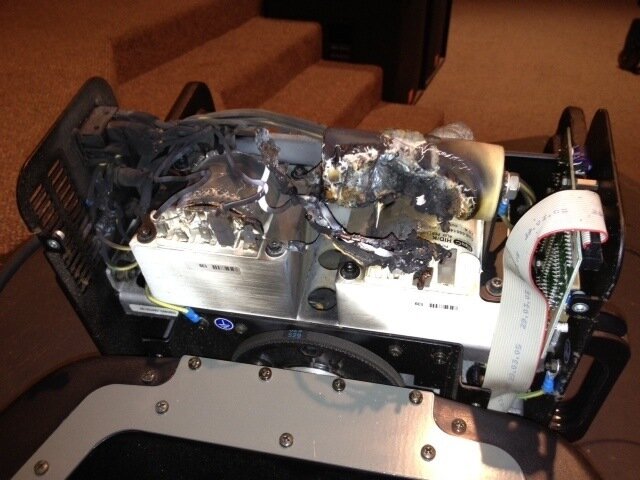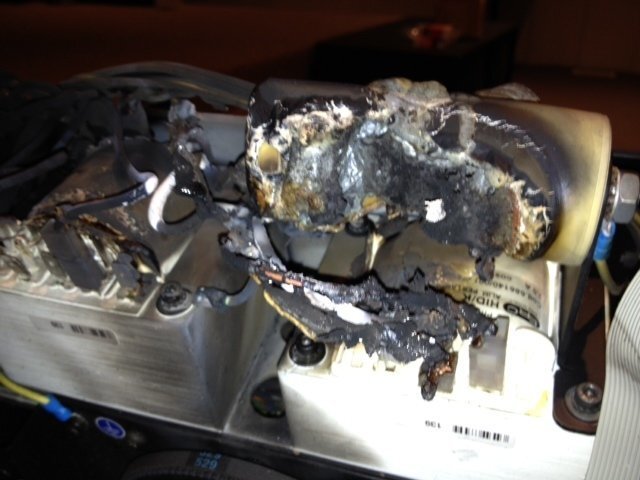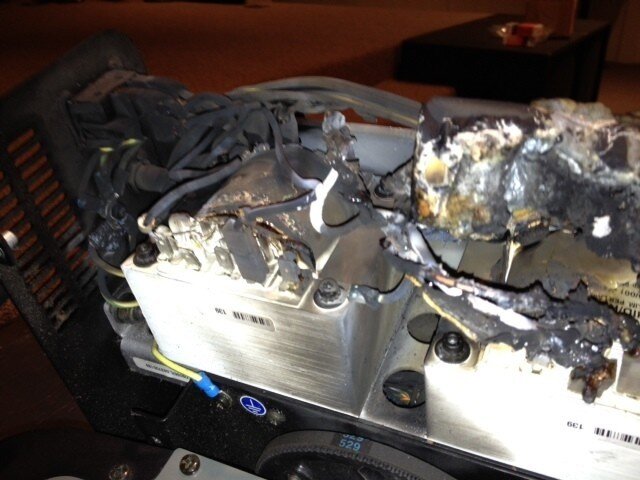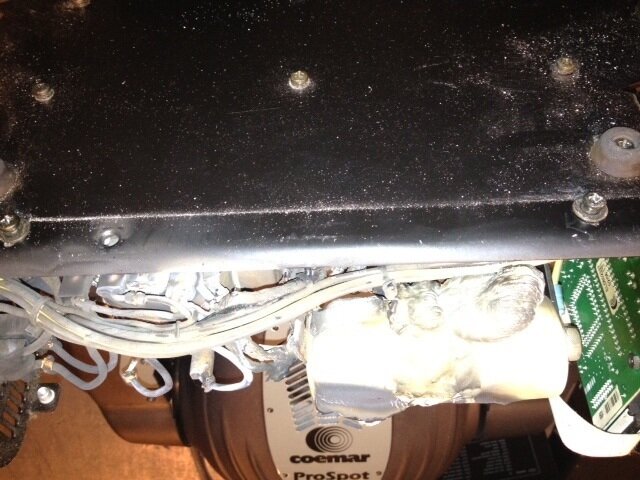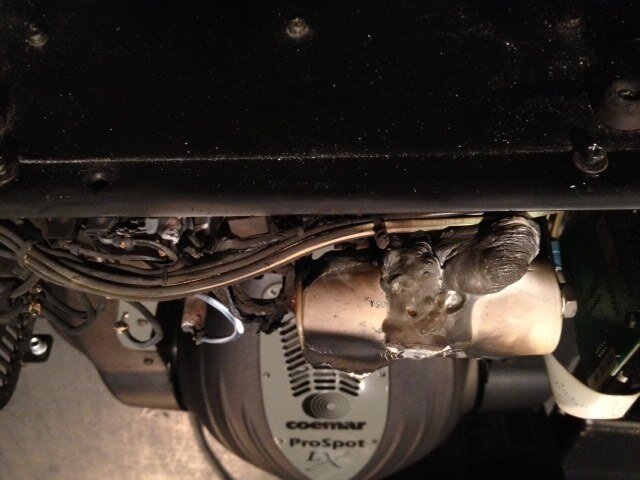millamber
Active Member
I was on a service call yesterday to address a prospot 250 lx. The client told me he thought the lamp had exploded in the fixture. During a service, they "heard a pop and then the light went out". I opened the head of the fixture to sweep out the broken lamp pieces but found the lamp intact and the head fairly clean. So I pulled down the fixture to see what the problem was.
It was about this time the client told me that after they heard the popping sound, there was an odor of melting wires and when he said the light went out he meant the fixture didn't power up at all. I pulled open the cover on the transformer/ballast/capacitor side and found the below images.
It was about this time the client told me that after they heard the popping sound, there was an odor of melting wires and when he said the light went out he meant the fixture didn't power up at all. I pulled open the cover on the transformer/ballast/capacitor side and found the below images.



